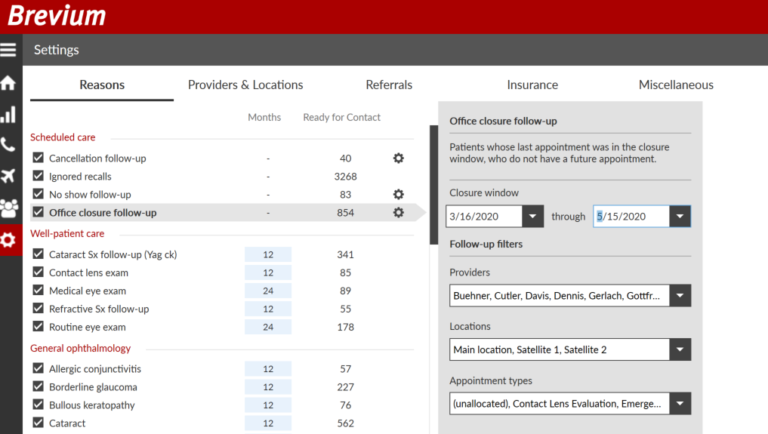The Brevium Blog

4 Tips for Decreasing No-shows at Your Practice
No-shows are the bane of every medical practice. On average, 23 percent of appointments end up as no-shows. Each one costs practices between $150 and $500 and often requires more extensive or emergency care in the future. The good news is that you can employ four techniques to reduce your no-shows.
Before you start making plans, though, understand the risk factors for no-shows. The highest-risk patients are unmarried, recently widowed or divorced; are younger than 35; are on Medicaid or have no insurance; have chronic conditions; or live more than 60 miles from your practice. Keep these demographics in mind as you undertake your no-show reduction measures.
The other important factors to consider are why these demographics become no-shows. Forgetfulness is the number one reason. Schedule conflicts, costs and fear are close behind, with a variety of issues from language barriers to lack of transportation also being reasons. Notice that neglect and irresponsibility are not on the list. That means you can take meaningful measures to help no-shows become loyal patients. [1]
1. Don’t Let Patients Forget
A doctor appointment is not the most important event in each patient’s life. Fortunately, you have access to automated tools to remind them when it is time to remember. Brevium provides automated appointment reminders in ways each patient prefers, including emails, texts, live or automated phone calls, and even post cards. You can also send reminders when they are most effective.
2. Remove Schedule Conflicts with Online Patient Scheduling
Patients who become no-shows due to scheduling conflicts, often accept the appointment suggested by the practice, because they don’t think they have any other options. Then, when the appointment time approaches, they run into conflicts. You can give your patients complete control over their appointment timing by offering online patient scheduling, where they choose the appointment time from a set of available times. The act of scheduling is also more convenient for patients. More than 40 percent of self-scheduled appointments are currently scheduled at night, when patients don’t need to take time out of their workday. Self-scheduling is also faster. Patients spend eight minutes on average scheduling on the phone and are transferred at least once. Online, they spend two minutes and can schedule 24 hours a day, seven days a week. [2]
3. Establish a Code of Conduct
This is a difficult step when you are trying to create a friendly and inviting office, but no matter how friendly you are, no matter how many reminders you send, some people will always be late or not show up at all. They need clear rules beyond normal social pressure. You can establish the specifics, such as, appointments that aren’t filled within 15 minutes might be canceled, and patients will be charged for missed appointments. Note that more than 40 percent of patients who become no-shows at practices that have a no-show policy are unaware of the policy. [3] Make sure your rules are posted in the office and in all reminder communications, whether emails, texts or automated phone calls, so there are no surprises.
4. Set Patients at Ease
Make sure your practice environment—inside and out—is welcoming and inviting. The more enjoyable your patients’ first visit is, the more likely they are to return for future visits. Make sure your front-desk staff members are sincere and friendly. Keep your entire practice spotless. Be the first to say, “Hello.” Be prepared for each patient by knowing their name, why they are there and some personal information. No matter how busy the doctor is, if they give the patient undivided attention for the first 60 seconds of their encounter, the patient will feel the visit was meaningful. [4] These will all go a long way to creating a memorable first impression and a long-term relationship.
Understanding why patients become no-shows and taking measures to combat each reason can significantly reduce the number of no-shows your practice experiences, resulting in a healthier bottom line and better care for all of your patients.














